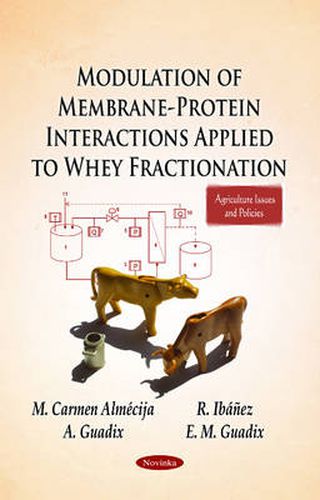Readings Newsletter
Become a Readings Member to make your shopping experience even easier.
Sign in or sign up for free!
You’re not far away from qualifying for FREE standard shipping within Australia
You’ve qualified for FREE standard shipping within Australia
The cart is loading…






This book examines the effects of the interactions between membrane and proteins on the separation of whey proteins. These interactions can be modulated by modifying the chemical environment of the feed solution, for example, by changing the pH. In the experimental set-up, a tubular ceramic cross-flow ultrafiltration membrane was installed and continuous diafiltration was selected as operational mode. pH was found to be a crucial process variable since a wide variety of responses were obtained in permeate flow and protein transmission when this input was altered. As a conclusion, these results provide useful information for the design of filtration strategies in which particular whey fractions are targeted.
$9.00 standard shipping within Australia
FREE standard shipping within Australia for orders over $100.00
Express & International shipping calculated at checkout
This book examines the effects of the interactions between membrane and proteins on the separation of whey proteins. These interactions can be modulated by modifying the chemical environment of the feed solution, for example, by changing the pH. In the experimental set-up, a tubular ceramic cross-flow ultrafiltration membrane was installed and continuous diafiltration was selected as operational mode. pH was found to be a crucial process variable since a wide variety of responses were obtained in permeate flow and protein transmission when this input was altered. As a conclusion, these results provide useful information for the design of filtration strategies in which particular whey fractions are targeted.